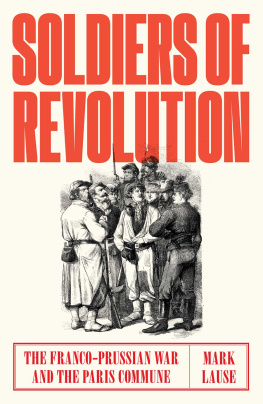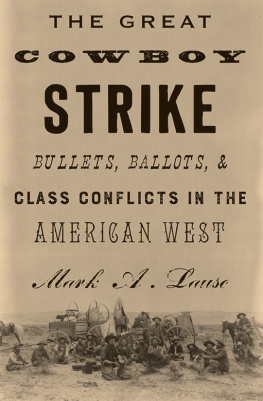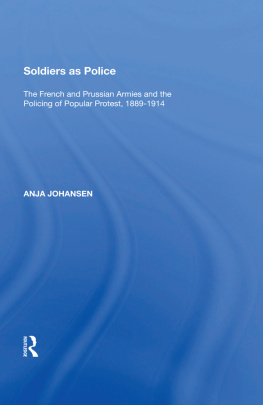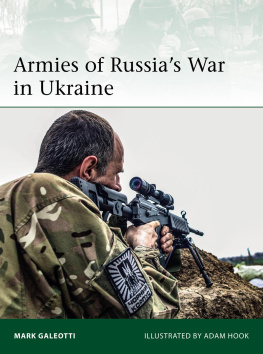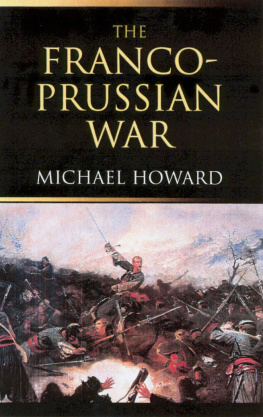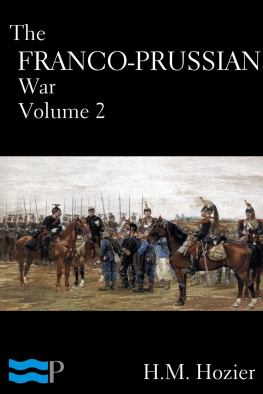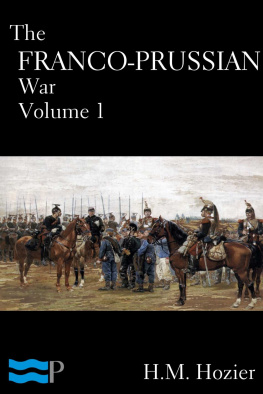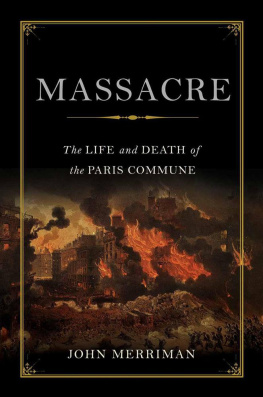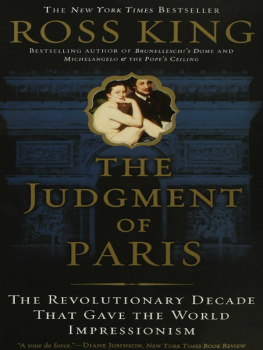Contents

Soldiers of Revolution
Soldiers of Revolution
The Franco-Prussian Conflict
and the Paris Commune
Mark Lause

First published by Verso Books 2022
Mark Lause 2022
Illustration on page 184, Illustrated London News, October 1, 1870
All rights reserved
The moral rights of the author have been asserted
1 3 5 7 9 10 8 6 4 2
Verso
UK: 6 Meard Street, London W1F 0EG
US: 20 Jay Street, Suite 1010, Brooklyn, NY 11201
versobooks.com
Verso is the imprint of New Left Books
ISBN-13: 978-1-78873-054-9
ISBN-13: 978-1-78873-057-0 (US EBK)
ISBN-13: 978-1-78873-056-3 (UK EBK)
British Library Cataloguing in Publication Data
A catalogue record for this book is available from the British Library
Library of Congress Cataloging-in-Publication Data
Names: Lause, Mark A., author.
Title: Soldiers of revolution : the Franco-Prussian Conflict and the Paris Commune / Mark Lause.
Other titles: Franco-Prussian Conflict and the Paris Commune
Description: London ; New York : Verso Books, 2022. | Includes bibliographical references and index. | Summary: A study of the momentous military developments during the Franco-Prussian War, which shaped the nature of civilian insurrection as well as presaging the events of the Great War that would follow in the next centuryProvided by publisher.
Identifiers: LCCN 2021042930 (print) | LCCN 2021042931 (ebook) | ISBN 9781788730549 (hardback) | ISBN 9781788730570 (ebk)
Subjects: LCSH: Franco-Prussian War, 18701871. | Paris (France)HistoryCommune, 1871. | Military history, Modern. | Revolutions and socialismFranceHistory19th century.
Classification: LCC DC293 .L378 2022 (print) | LCC DC293 (ebook) | DDC 943.08/2dc23
LC record available at https://lccn.loc.gov/2021042930
LC ebook record available at https://lccn.loc.gov/2021042931
Typeset in Minion Pro by Hewer Text UK Ltd, Edinburgh
Printed and bound by CPI Group (UK) Ltd, Croydon CR0 4YY
Contents
Part I
REPUBLIC AND NATION
Part II
WAR FOR THE EMPIRE
Part III
WAR FOR THE REPUBLIC
Part IV
WAR FOR THE PEOPLE: THE REVOLUTION
This study revolves around several concerns, the first rooted in issues around the development of society and the concept of revolution. After all, from one perspective, the most hellish and dramatic incidents in the history of the Butte de Warlencourt represented relatively short punctuation points in its long and interesting history. Clearly, from time immemorial, those working the land around Butte de Warlencourt have sought shelter under its trees, a rest from labors or a refuge for rural lovers hidden from the prying eyes. For the better part of two thousand years, merchants and their servants making the peaceful commercial trek along the nearby road found the butte a well-positioned point of rest. So did the exhausted and footsore journeyman walking hopefully toward the next job. Nearby, the locals or travelers could find something to help appease their hunger, a supplement to the cheap bread picked up at the last village and dropped into a satchel for just such a sumptuous repast. Nobody remembers the site because of the human associations that filled the vast bulk of its history.
What happened in 1916 overshadowed its entire history. That July 1, the Big Push began just to the southwest at Albert. Protected by trenches and machine guns, the Germans made that day the bloodiest in the history of the British Army, and the slaughter in the Somme continued into November. The British made it halfway to Bapaume, to what was left of the village of Le Sars, beyond which loomed the Butte de Warlencourt. With great effort and despite tremendous losses, the British took the butte, then lost it and retook it many times. In the aftermath of this fighting, soldiers from Australia and New Zealand finally had it long enough to fortify it for the Allies, though the Germans retook it in their spring offensive of 1918, forcing the Allies to retake it for a final time in August. Thereafter, unexploded munitions and the grisly remains of casualties from around the world made it an unmarked monument to a war to end all warsor the American version, a war to make the world safe for democracy.
What raged about the Butte de Warlencourt in the twentieth century virtually obliterated what took place in 1871 when French horsemen clambered up its icy slopes, to scan the frozen fields around them for Germans. It cast the war of 18701 as far into the shadows as it had the Roman victory over a Frankish invasion in 448 CE. Indeed, the butte itself was no natural formation but likely the burial mound of a long-forgotten prehistoric chief.
In this layered history, the Franco-Prussian War rested roughly halfway between Napoleons wars and the Gtterdammerung of 191418. The brevity of the war belies its importance, and its chroniclers tend to present a truncated version of an already brief war. On August 4, 1870, armies of the Prussian-led German federation began pouring into France, and, by September 2, destroyed or neutralized the major French armies, captured Emperor Napoleon III himself, and brought down the French government. This destroyed the Second Empire of France and placed the Confederation around the leadership of Prussia on the fast track to becoming a new German Reich, toppling a balance of power established in the wake of the first Napoleon.
The war continued for another five months, through a bitter winter into February 1871.the persistent and coherent engagement of the civilian populations, creating the focus and social discipline that Karl Marx and others had ascribed to industrialization generally.
Marx may have also been correct in suggesting that the new class structures created identities that transcended narrow national interests, but, similarly, warsthe most dramatic celebrations of national madnesswere events of global importance. The origins, waging, and impact of the Franco-Prussian War not only created Germany and remade France, but also had a major impact on neighboring countries, as well as North Africa and the Balkans. Over time, the shifting balance of power affected Great Britain and Ireland and the transatlantic community, as well as the fate of Africa and Asia.
Individual entanglements in the war reflected this kind of cosmopolitanism, particularly among those who fought for France. As an imperial power, it fielded an army that included its colonial subjects. Then, as a new republic, it inspired politically motivated volunteers from across the Western world, including Germans.
At the same time, the new kind of total war that produced a modern, centralized militarized state with unprecedented authority also vested it with unprecedented responsibility. Its exercise of that expanded and invasive power required the cooperation of its subjects, who could also hold government responsible more directly, regardless of their older institutional subjugation. The Great War and its detonation of the Russian Revolution of 1917 dramatically demonstrated this relationship between war and revolution, but it also reiterated what had been established half a century earlier, in the Franco-Prussian War and the Paris Commune, as with the American Civil War and the destruction of African slavery.
After a preliminary view of nineteenth-century Europe and the mid-century crisis of mass republicanism, this brief work sketches, I hope, enough of that experience to provide a clearer approach to the outbreak of the largest armed insurrection of the nineteenth-century working class.

